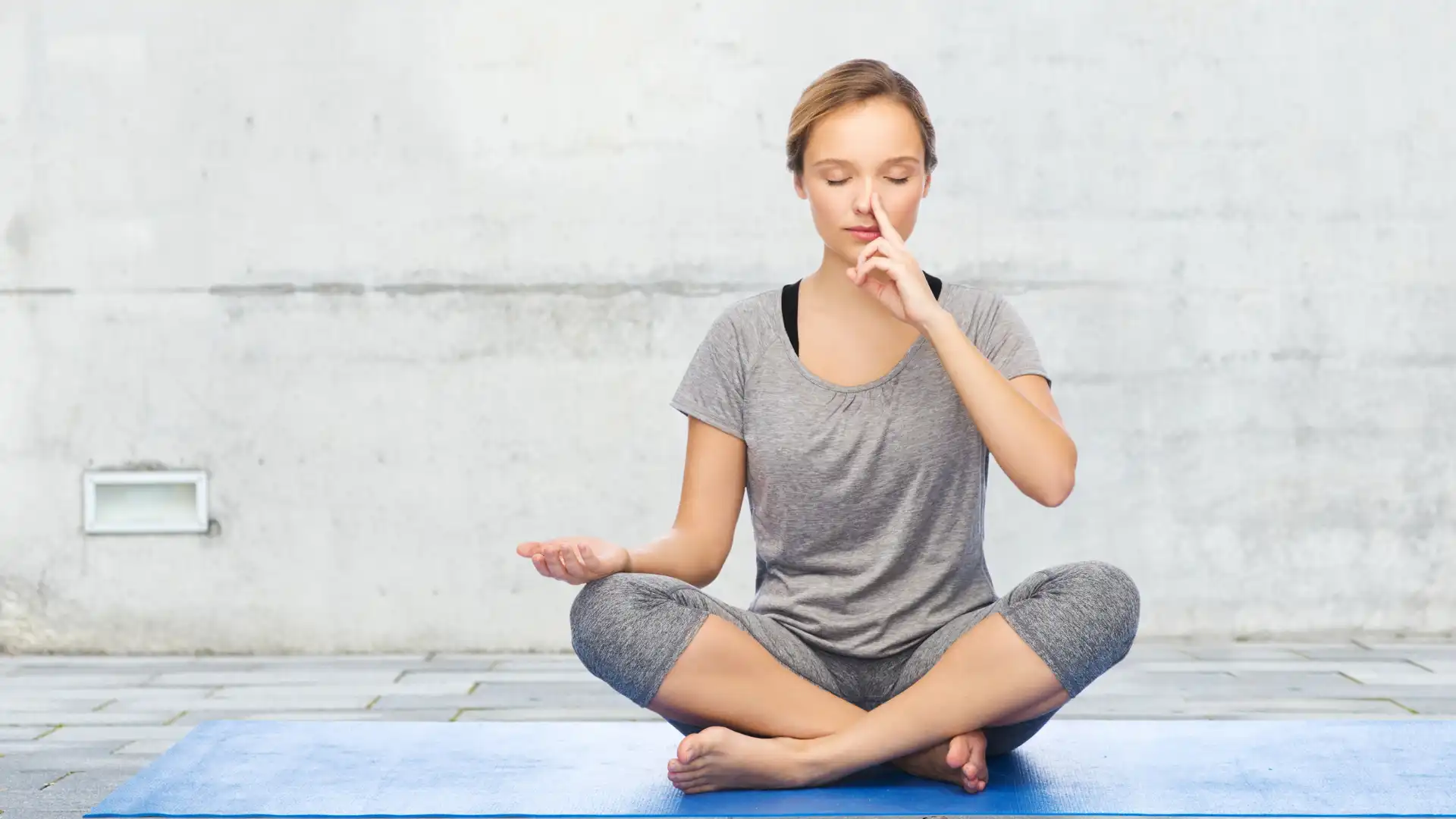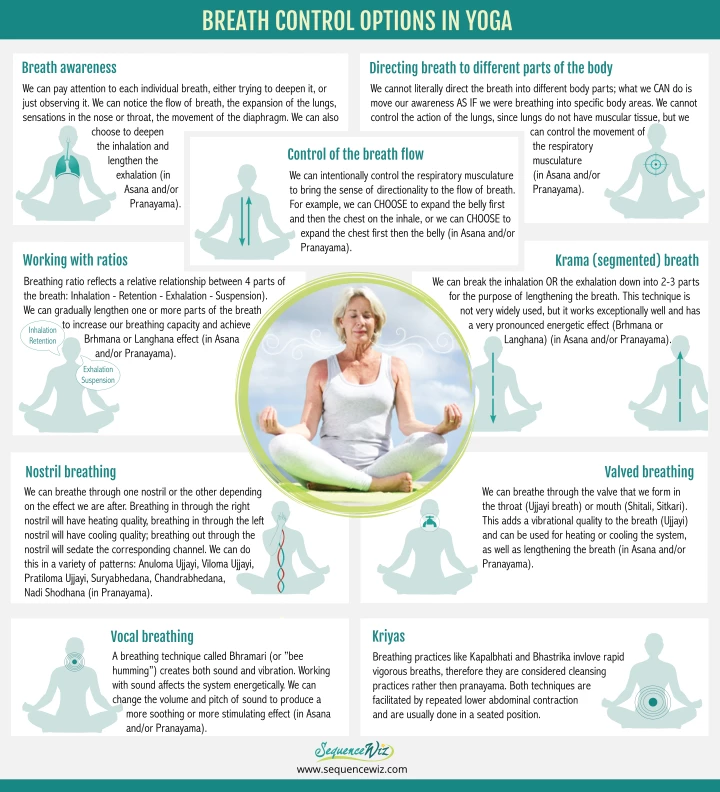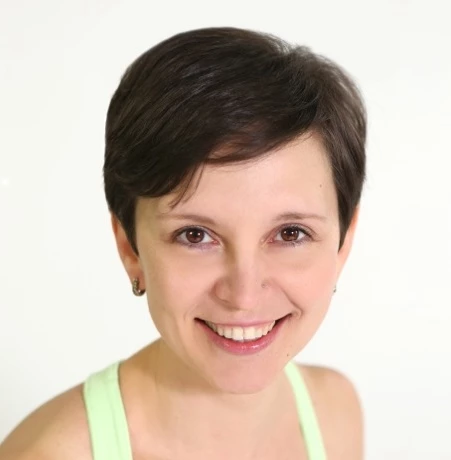Pranayama: How to Feel More Energetic and Powerful

One of my favorite things to do when I teach a yoga class is to ask my students to close their eyes, sense the quality of their energy and then show it to me with a hand gesture. As they sit there with their eyes closed, their hands begin to move in such a wide variety of ways—no two students’ hand movements ever look the same. Some trace a shape of a smooth, even wave, others show miniature explosions, some gestures look sporadic and jittery; still, others appear to be flatlining.
Usually, we do not spend much time during the day paying attention to the quality of our energy, yet it colors every single thing we do and the way we feel within our bodies and about the outside world. And when we talk about energy management in our yoga practice, it is not just about bringing the energy up or decompressing, but about making your energy more potent and smooth flowing.
In yoga, the term pranayama is often defined as breathing practices, but these are tools, not the goal. Pranayama means “life force expansion,” and it is meant to connect you to the very essence of your own personal power and help you expand it. A great yoga teacher who brought yoga to the West, Swami Vivekanananda describes how your own life force flows from the ultimate source of all energy:
“In the ocean there are huge waves, like mountains, then smaller waves, and still smaller, down to the little bubbles; but back of all these is the infinite ocean. The ocean is connected with the bubble at one end, and with the huge wave at the other end. One man may be a gigantic wave, and another a little bubble, but each is connected with that infinite ocean of energy which is the common birthright of every being that exists. Wherever there is life, the storehouse of infinite energy is behind it.”
So if you are feeling depleted, disconnected or jaded, through pranayama, you can replenish your resources and reconnect to that ultimate source of energy. While this goal sounds appealing, the process of getting there might seem daunting. Will you need to sit in a cave for years on end doing precise breathing techniques to cultivate your energy?
Surprisingly, even yogis did not encourage it. The ancients believed that between the ages of about 20 and about 60 most of us reside in the “householder” stage of life, which means that we are busy with our families, careers, and responsibilities. To handle this heavy load with grace and resilience and without compromising our health, we need to learn how to manage our energy through our yoga practice.
That is why pranayama, with its life-force expansion, is so important to all of us. And when it comes to pranayama, once again, consistency is more important than the length of the practice. Generally speaking, it is enough to do at least 12 breaths of a specific pranayama technique for it to have an effect.
Here is a comprehensive list of pranayama techniques that you can use to begin cultivating, controlling, and guiding your prana.
9 Ways to Practice Pranayama

Also read Your Brain on Meditation: Using Yoga’s Limbs to Achieve Pure Awareness by Olga Kabel.
Study with Olga Kabel and YogaUOnline – Yoga for Every Body: How to Adapt Yoga Poses for Different Situations, Conditions, and Purposes.
Reprinted with permission from Sequence Wiz.
 Educated as a school teacher, Olga Kabel has been teaching yoga for over 14 years. She completed multiple Yoga Teacher Training Programs but discovered the strongest connection to the Krishnamacharya/ T.K.V. Desikachar lineage. She had studied with Gary Kraftsow and American Viniyoga Institute (2004-2006) and received her Viniyoga Teacher diploma in July 2006 becoming an AVI-certified Yoga Therapist in April 2011. Olga is a founder and managing director of Sequence Wiz-a web-based yoga sequence builder that assists yoga teachers and yoga therapists in creating and organizing yoga practices. It also features simple, informational articles on how to sequence yoga practices for maximum effectiveness. Olga strongly believes in the healing power of this ancient discipline on every level: physical, psychological, and spiritual. She strives to make yoga practices accessible to students of any age, physical ability, and medical history specializing in helping her students relieve muscle aches and pains, manage stress and anxiety, and develop mental focus.
Educated as a school teacher, Olga Kabel has been teaching yoga for over 14 years. She completed multiple Yoga Teacher Training Programs but discovered the strongest connection to the Krishnamacharya/ T.K.V. Desikachar lineage. She had studied with Gary Kraftsow and American Viniyoga Institute (2004-2006) and received her Viniyoga Teacher diploma in July 2006 becoming an AVI-certified Yoga Therapist in April 2011. Olga is a founder and managing director of Sequence Wiz-a web-based yoga sequence builder that assists yoga teachers and yoga therapists in creating and organizing yoga practices. It also features simple, informational articles on how to sequence yoga practices for maximum effectiveness. Olga strongly believes in the healing power of this ancient discipline on every level: physical, psychological, and spiritual. She strives to make yoga practices accessible to students of any age, physical ability, and medical history specializing in helping her students relieve muscle aches and pains, manage stress and anxiety, and develop mental focus.




